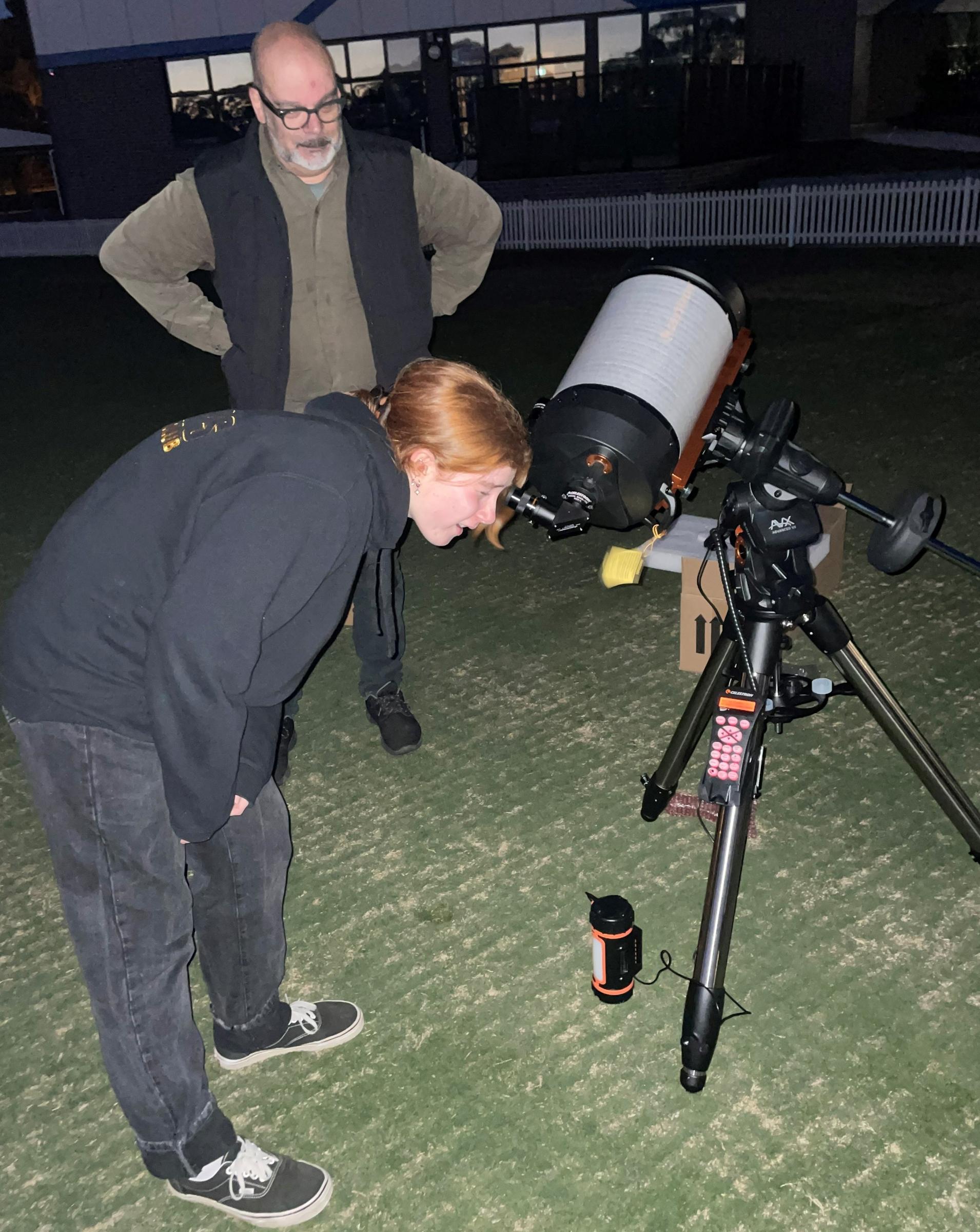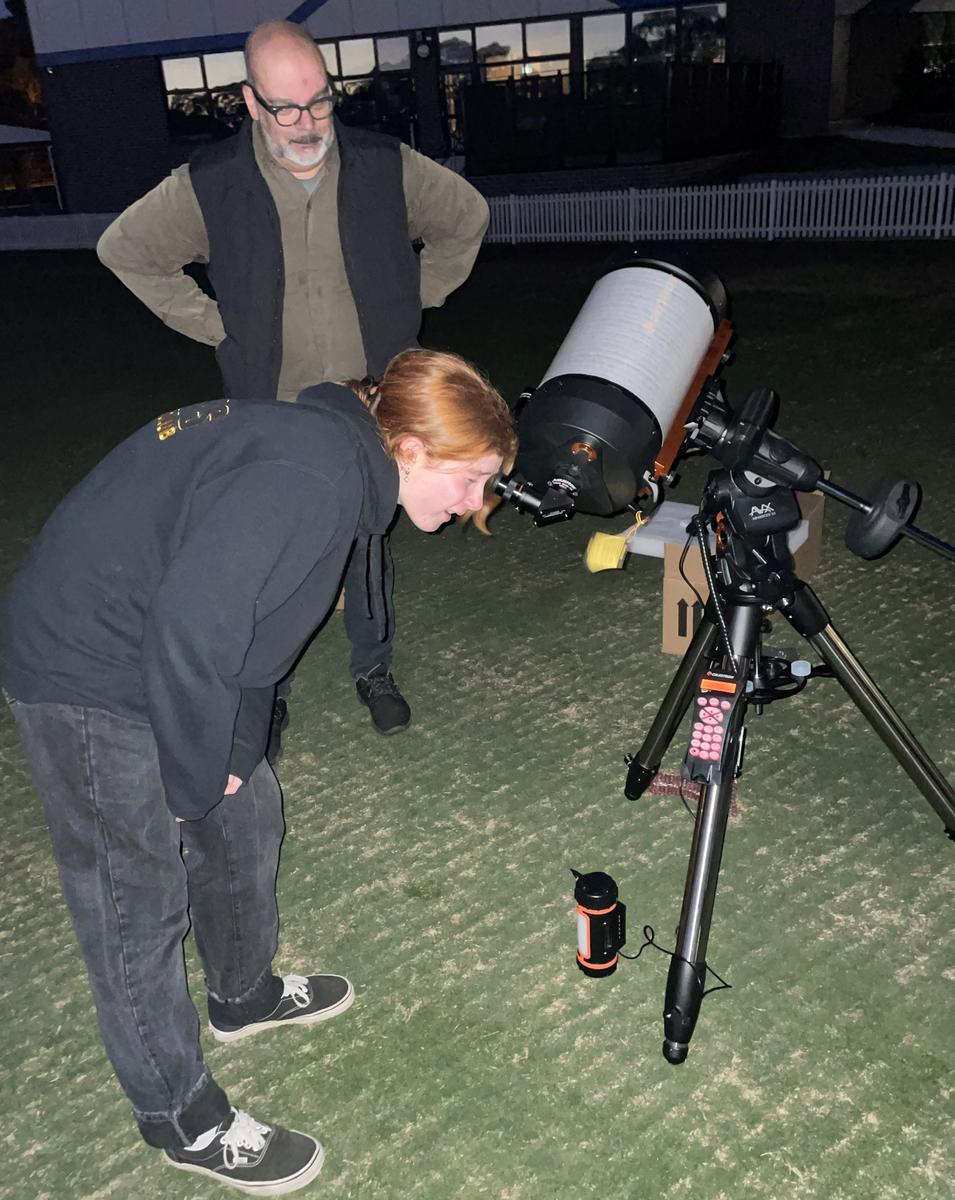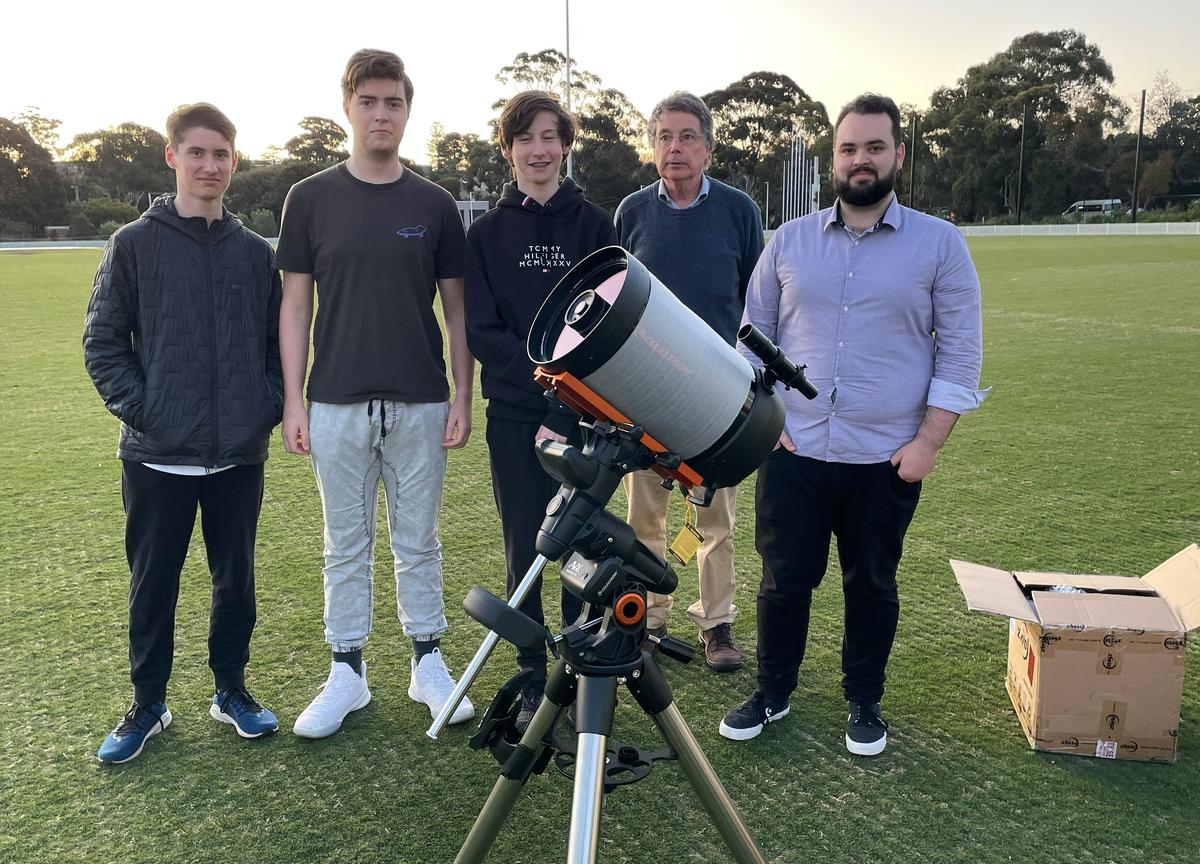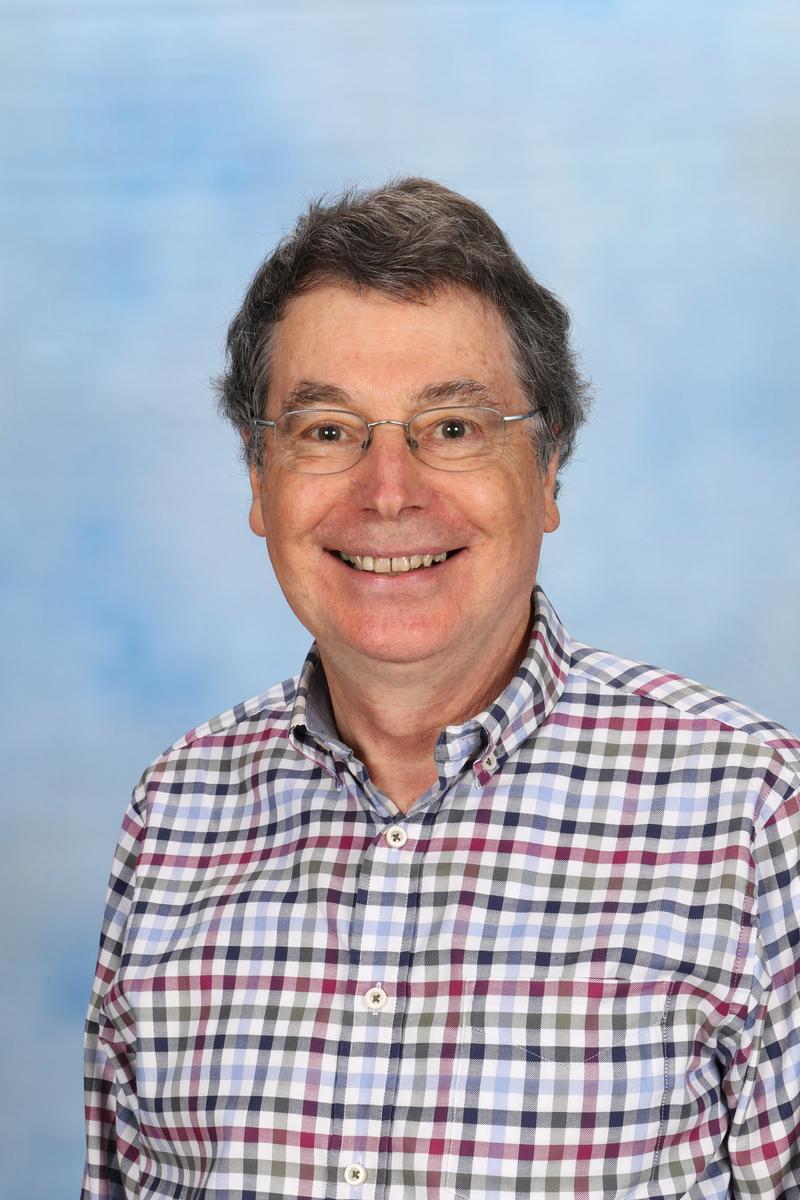Curriculum Innovation 2022 Contributions

We would like to thank our families for their ongoing support and contributions to the Curriculum Innovation Funds for 2022. 60% of our school community have made a contribution to date. Over the coming weeks we will be highlighting how these contributions have enhanced the curriculum programs we offer at the college.
Our New Telescope
Tuesday 18 October saw the launch of the use of the College’s new telescope. It was a beautiful clear night, perfect for looking at planets and stars. This telescope is a highly sophisticated piece of equipment, so we had an expert in this area help us to set it up for the first time.
What did we see on the very first night?
This was our first session and already we have seen:
- Saturn and the rings around it.
- Jupiter and its moons. The clarity of the telescope meant we could see cloud bands across Jupiter.
- The Jewel Box Cluster. This is a group of stars that has been described as having the “appearance of a superb piece of fancy jewellery". It looked magnificent and, even with lowest magnification, we could clearly see differently coloured stars.
What will we be able to do when we master the full use of this telescope?
- We also have a specialised astronomical camera that attaches to telescope. This will allow us to take very detailed and coloured photos of astronomical objects-the sort of pictures you see online and in magazines and with much more detail and colour than you can see with the naked eye.
- This telescope has a very sophisticated computer/motor system. So, if for example, we decide to look at a distant object that is not visible to the naked eye (e.g. the horsehead nebula – Google it!) we will just type its name into the computer and the telescope will find it.
- The motor/computer system means that once the telescope has locked onto an object, it will track it. This means that, unlike ordinary telescopes, we can have a long queue of people lining up to see the object without having to interrupt them every minute or so to realign the telescope as the object moves.
- The computer has wi-fi so that we can control the computer through an iPad, see what the telescope is looking at and save images directly to a USB.
What are the next steps?
- Fully train up a group of senior students to use all the aspects of the telescope listed above.
- Run viewing nights here at the College for any interested students and parents. We found on our first night that the viewing conditions on the ovals were excellent, so we do not need to go somewhere else.
- Use the telescope on our regular camps that take place in the country. If there is enough interest, have a special astronomical camp in the country.
- Take spectacular long exposure photographs of planets, galaxies, nebulae…(!) and then print and publish them.
All very exciting! Please remember that the senior students involved will become the experts in running the telescope in all its aspects and ultimately will be running astronomy nights and producing spectacular photographs.
Mr Chris McGuire
Teacher



